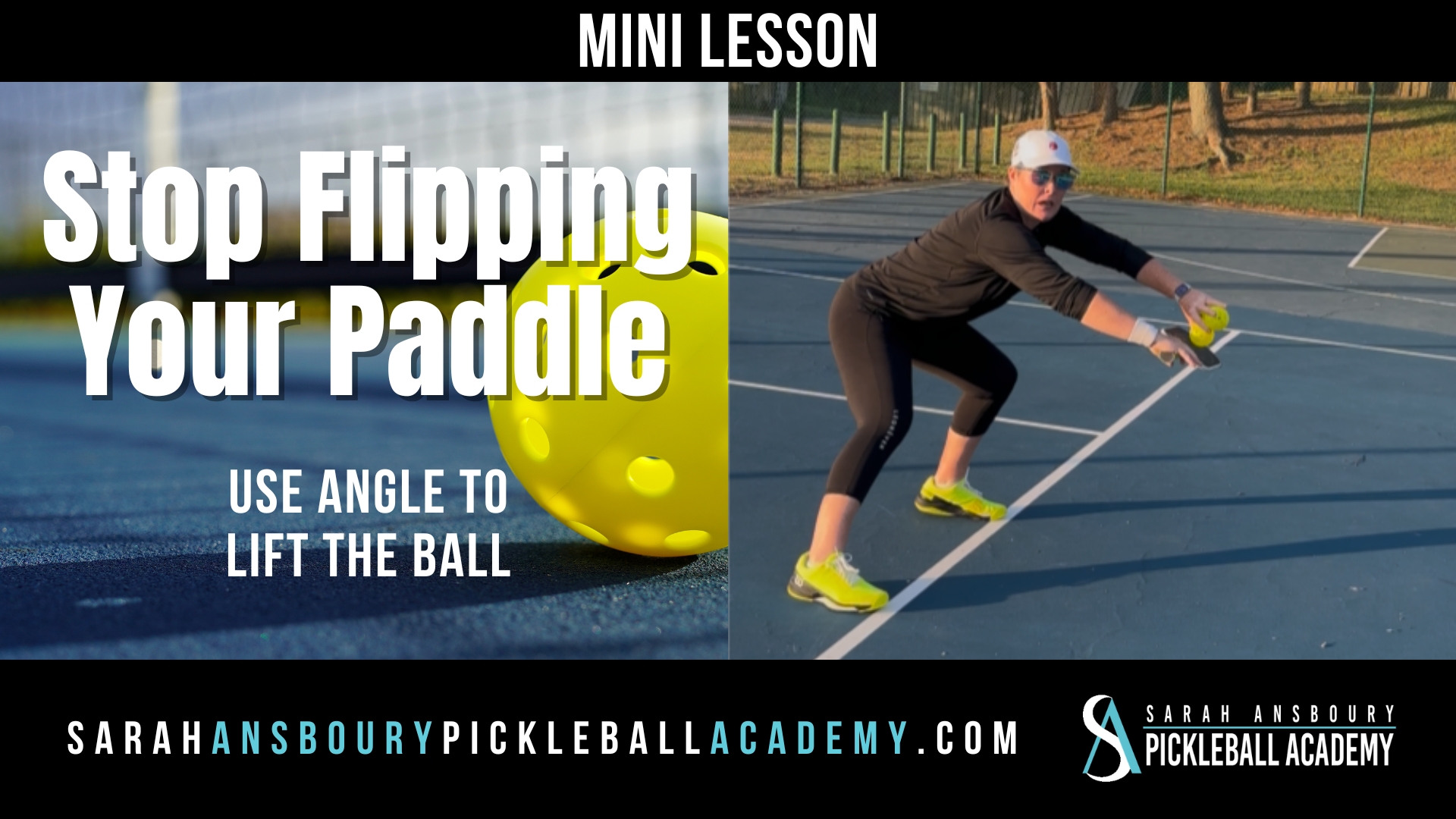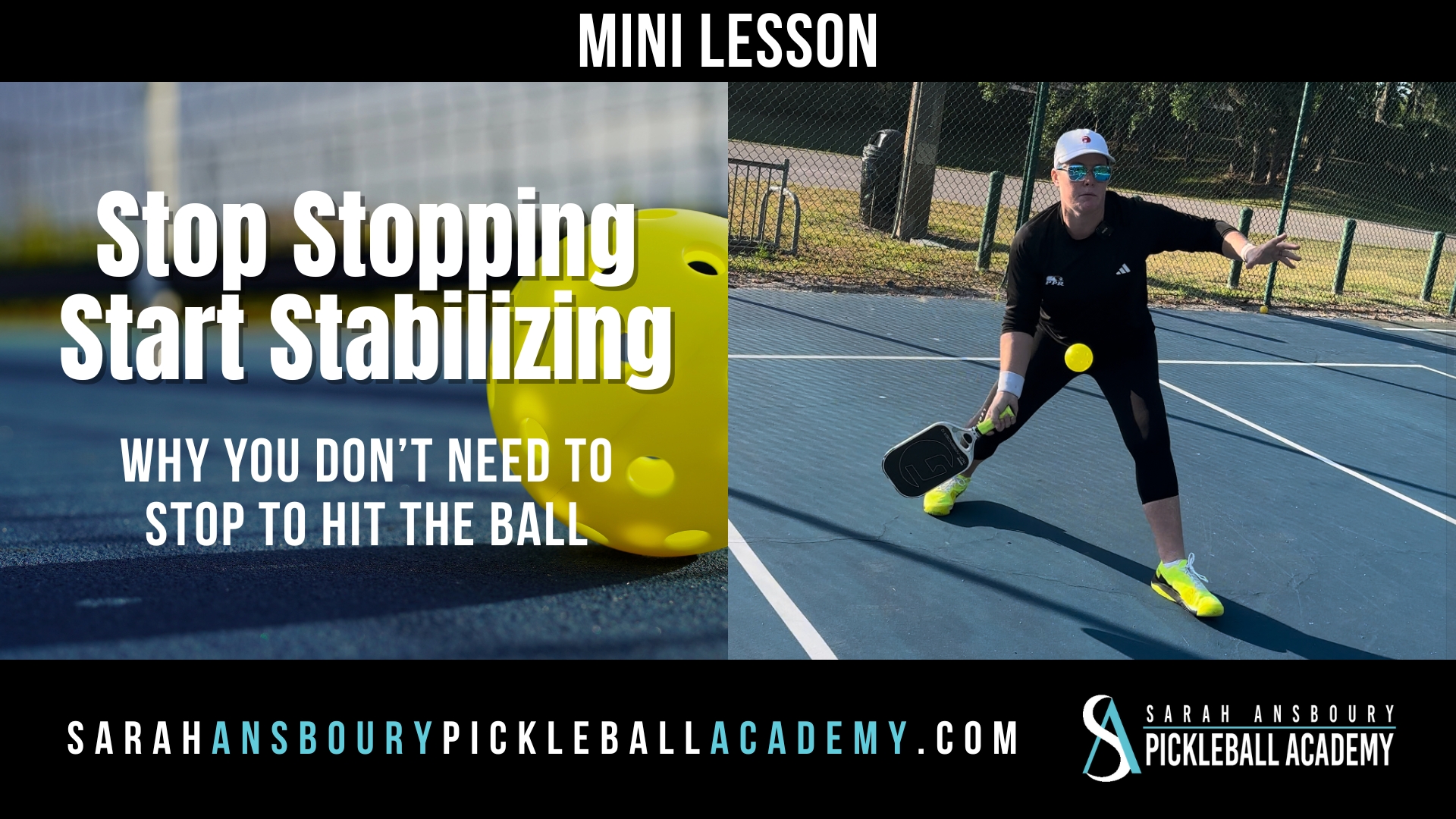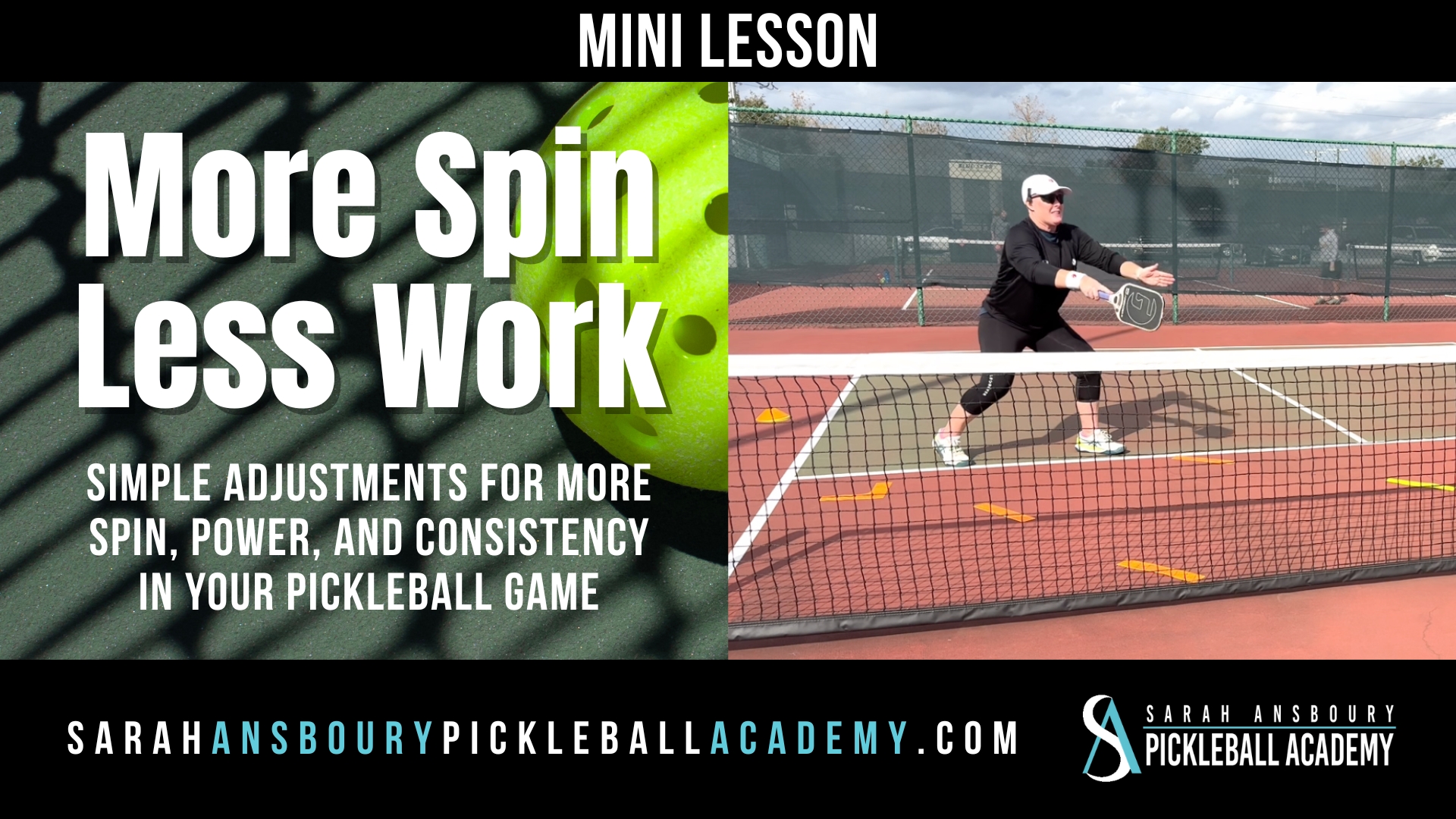Pickleball continues to evolve. The game and its strategies are changing. One example of this is the use of the swing volley over the old-school punch volley.

punch volley
A punch volley is created using leverage mostly from the elbow, by maneuvering the paddle to go over the ball with the butt of the paddle finishing down and often below the net. This type of swing causes tension in the body at the wrist, elbow, and shoulder. Since a punch volley is hit closer to the body, issues like getting jammed and the inability to control the contact point are inevitable.
Players will often move the grip around to suit the angle of the paddle to compensate. However, the angle of the paddle on contact and follow through yields little control of the ball resulting in unforced errors. Power on the punch volley is generated from the dominant side of the body and the paddle often finishes down near the hip below the net. For this reason, most punch volleys go into the net, especially if hit from the transition area. Knowing this, many players struggling in the transition zone will take a step or two back and allow the ball to bounce. Often the player is not in a position for the next shot.
Simply put, for most players, the odds of winning a point on a successful punch volley are low and will put players in a defensive position. More importantly, this shot can cause injury to the elbow, shoulders, and wrist.
Swing Volley
The swing volley, on the other hand, is an attacking shot that can be utilized in both the transition area and at the non-volley zone. It allows the player to take control of the contact point, swinging out through the ball using the torso and the natural kinetic energy of the body. If hit in the transition area, this shot utilizes the natural momentum of the player to move forward to the line, therefore, reducing the chance of injury.
It allows the player to take control of the contact point, swinging out through the ball using the torso and the natural kinetic energy of the body. If hit in the transition area, this shot utilizes the natural momentum of the player to move forward to the line, therefore, reducing the chance of injury.
When hitting a swing volley, the paddle usually comes around the ball from the outside using power generated from the kinetic chain of the hinge of the shoulder and rotation of the shoulders and hips. Most commonly the elbow is extended which allows the tip of the paddle to come around the ball and lead it toward the target. Leading with the tip of the paddle creates more angles of contact and a wider variety of shots. The ball tends to stay on the paddle longer and swinging through the ball, instead of down, will result in fewer balls hit into the net as well as better preparation for the next shot.
transition or Non-Volley Zone
The swing volley can be hit from both the transition and the non-volley zone. Many players fear hitting balls in the transition zone, but a swing volley offers greater consistency and offensiveness in this area. At the NVZ, it allows your paddle to get under the ball and carry it over the net. So whether you are a newer player or a bit more advanced, learn to execute an effective swing volley and add more offense to your game.










